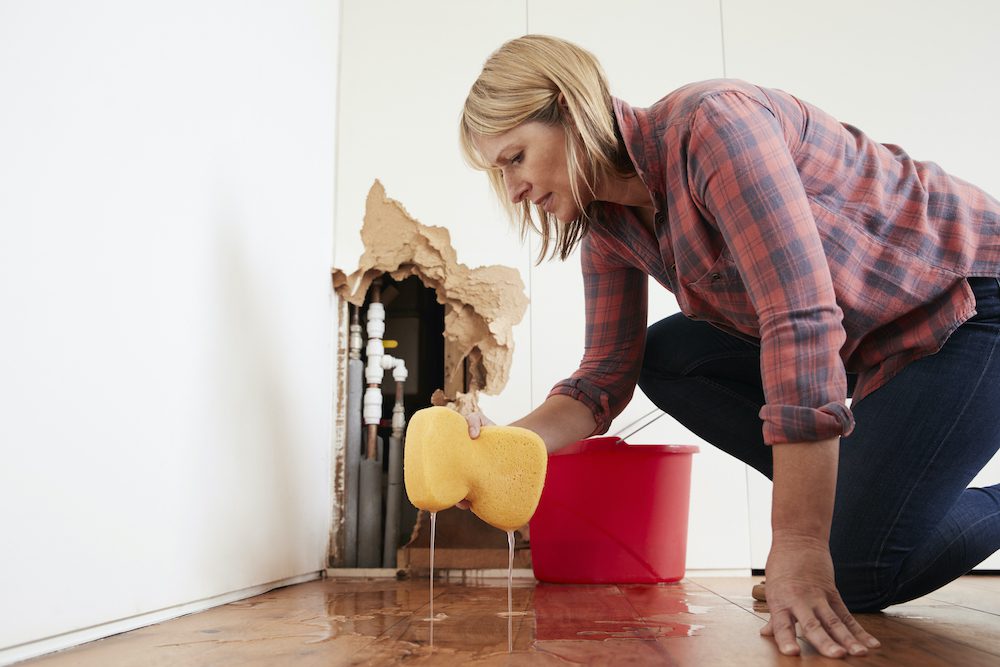Reveal Ingenious Methods for Spotting Concealed Water Line Leakages
Reveal Ingenious Methods for Spotting Concealed Water Line Leakages
Blog Article
Do you find yourself hunting for resources on Finding hidden leaks?

Early discovery of leaking water lines can mitigate a potential disaster. Besides conserving you money, it will certainly reduce the stress as well as aggravation. The minute you locate a leak, calling your plumber for repair services is the best solution. Some little water leaks may not be noticeable. Here are some hacks that help if you can not find it with your nude eyes.
1. Check Out the Water Meter
Checking it is a surefire way that aids you discover leakages. If it relocates, that shows a fast-moving leak. This implies you may have a slow-moving leakage that can even be underground.
2. Inspect Water Intake
Analyze your water expenses and track your water intake. As the one paying it, you ought to see if there are any kind of disparities. If you detect sudden changes, regardless of your intake coinciding, it implies that you have leaks in your plumbing system. Remember, your water costs must fall under the same range each month. An abrupt spike in your expense indicates a fast-moving leakage.
A consistent increase every month, also with the same behaviors, shows you have a slow leak that's additionally slowly intensifying. Call a plumber to extensively inspect your residential property, particularly if you feel a cozy location on your floor with piping below.
3. Do a Food Coloring Examination
When it pertains to water intake, 30% originates from bathrooms. Test to see if they are running appropriately. Drop flecks of food color in the tank and wait 10 minutes. There's a leak in between the container and dish if the shade somehow infiltrates your bowl during that time without flushing.
4. Asses Outside Lines
Do not forget to examine your exterior water lines too. Needs to water leak out of the link, you have a loose rubber gasket. One small leak can lose bunches of water as well as spike your water costs.
5. Evaluate and also Assess the Scenario
House owners ought to make it a habit to inspect under the sink counters and also even inside closets for any type of bad odor or mold development. These two warnings suggest a leak so punctual interest is needed. Doing regular evaluations, also bi-annually, can conserve you from a significant issue.
Much more importantly, if you know your house is already old, maintain a watchful eye on your heaters, tubes, pipes etc. Look for stainings and compromising as most devices and also pipelines have a life span. They will additionally naturally weaken as a result of tear and also put on. If you presume dripping water lines in your plumbing system, do not await it to escalate. Call a professional plumber right now so you do not wind up with a dreadful mess in your house.
Early discovery of leaking water lines can reduce a prospective disaster. Some tiny water leakages might not be noticeable. Inspecting it is a surefire way that aids you find leaks. One tiny leak can throw away lots of water and spike your water expense.
If you suspect dripping water lines in your plumbing system, do not wait for it to escalate.
WARNING SIGNS OF WATER LEAKAGE BEHIND THE WALL
PERSISTENT MUSTY ODORS
As water slowly drips from a leaky pipe inside the wall, flooring and sheetrock stay damp and develop an odor similar to wet cardboard. It generates a musty smell that can help you find hidden leaks.
MOLD IN UNUSUAL AREAS
Mold usually grows in wet areas like kitchens, baths and laundry rooms. If you spot the stuff on walls or baseboards in other rooms of the house, it’s a good indicator of undetected water leaks.
STAINS THAT GROW
When mold thrives around a leaky pipe, it sometimes takes hold on the inside surface of the affected wall. A growing stain on otherwise clean sheetrock is often your sign of a hidden plumbing problem.
PEELING OR BUBBLING WALLPAPER / PAINT
This clue is easy to miss in rooms that don’t get much use. When you see wallpaper separating along seams or paint bubbling or flaking off the wall, blame sheetrock that stays wet because of an undetected leak.
BUCKLED CEILINGS AND STAINED FLOORS
If ceilings or floors in bathrooms, kitchens or laundry areas develop structural problems, don’t rule out constant damp inside the walls. Wet sheetrock can affect adjacent framing, flooring and ceilings.
https://www.servicemasterbyzaba.com/blog/how-to-detect-water-leakage-in-walls/

As an enthusiastic reader on Finding hidden leaks, I figured sharing that excerpt was worth the trouble. Those who enjoyed reading our post kindly remember to share it. We appreciate reading our article about Hacks to detect leaks.
Overflow resolution available. Report this page